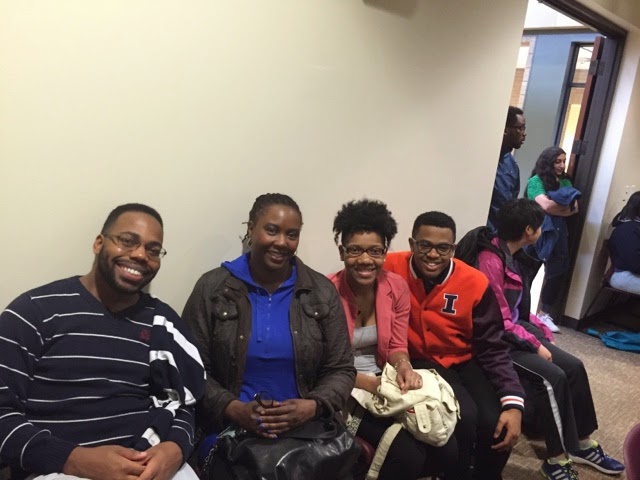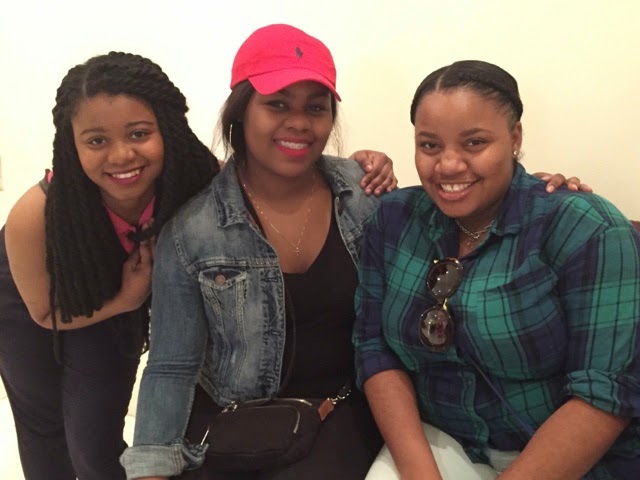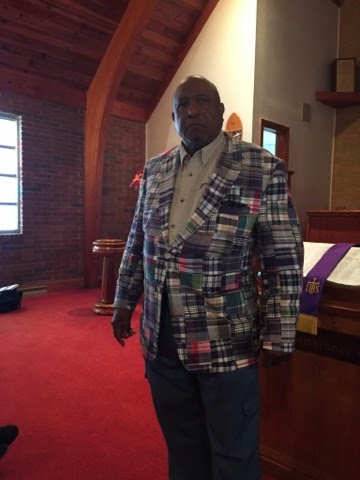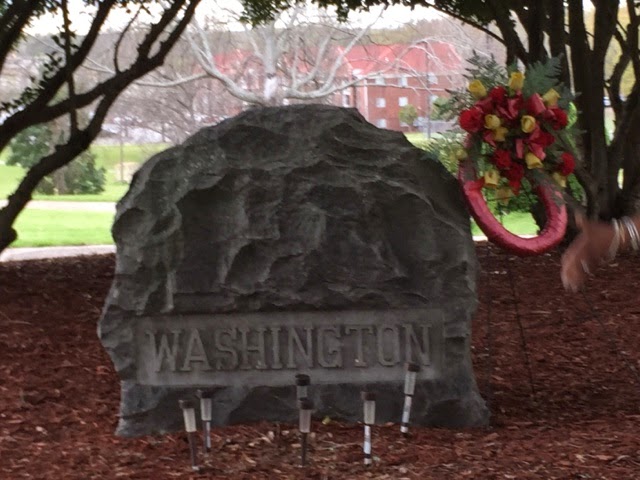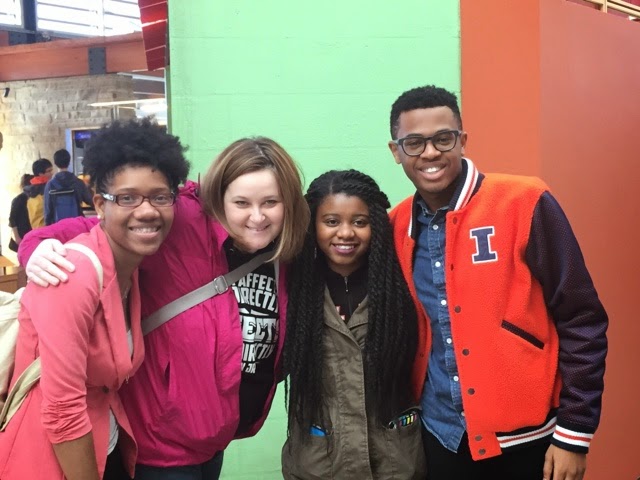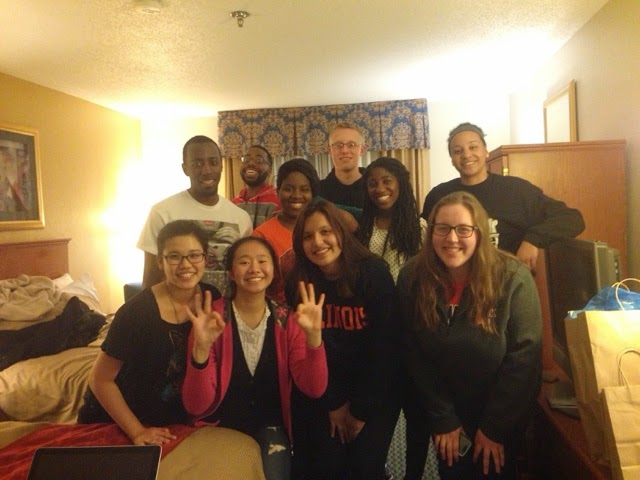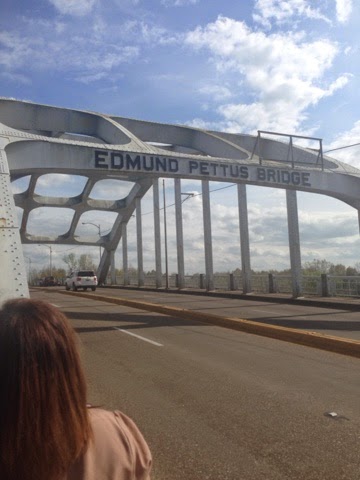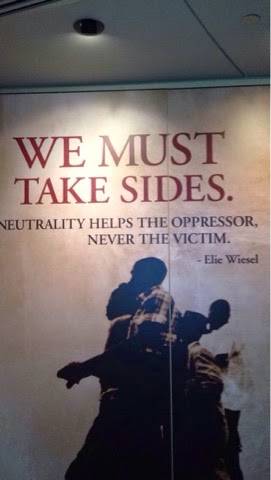Day 1: Friday, March 20, 2015
Hi! My name is Chibu Asonye (I realized I didn’t tell you my name earlier), I’m currently a freshmen and I am very happy that I was able to go on this trip.
We’re on the bus and were watching these Civil Rights movies giving a look at what we will learn at the places we go. Guys, Elementary and High schools need to step up their game because they don’t tell you the truth. They act like the Civil Rights Movement happened in a day the amount of time spent on it. No Shade but we can definitely do better in our history departments. The Civil Rights advocates were bosses! Like in the slang term. They People Kicked Really Butts. I cannot stress enough how more I have learned about these people in the last like five hours. I’m already excited.
Day 3: Sunday, March 22, 2015
At the Center for Civil Rights and Human Rights, I did a simulation of the Lunch Counter Sit-Ins. It was a one minute and 46 seconds. I almost cried. How these people lasted for month with that kind of treatment blows my mind. They were my age.
Later that day
Being on the Civil Rights Pilgrimage, I have been able to engage in conversations that I wouldn’t been able to. One night, we ate at Mary Mac’s Tea Room and I sat with three boys, Ryan, Austin, and Jacob. Our table consisted of an African-American, Native-American, and two White students; but of the two White students, one was of high-socioeconomic means and status and the other was of low socioeconomic status.
Clearly, we all come from different walk of life but we’re all on this trip. That night was an amazing nigh because of our talk and boy, did we talk. Ryan, comes from a highly affluent family, doesn’t have to worry about tuition, and is studying Philosophy. He asked out table about privilege; being a white male, do we think he should feel some sort of shame? Guilt? Like rich persons remorse. Now, I don’t know who is actually going to read this and what you all would say, and since I wasn’t this to be concise, I won’t go into detail about my answer (Which was a Hard NOO, by the way). But I was surprised that he would ask this to us. I have to work and will be working for the rest of my four years because my scholarship requires it and I need to pay for books and my tuition. It surprised me that he cared and more so, sympathized with needing to work.
We also talked about the Chief and other socioeconomic barriers, what it was like for me, an African-American from Chicago to go from a very diverse high-school to a Primarily White Intuition (PWI). Again, I won’t detail my answer but for me it was and I quote, “Weird.” Anyone who has read this far, feel free to ask me for my full (don’t worry, I’ll also be concise) answer, you know, if you want to.
I probably would never have talked to Ryan, my new questioning friend, if I were not on this trip. Not going to lie, but I was starting to think the kids at U of I were a little too covertly racist but Ryan definitely gave me hope for my fellow classmates. Both White and Black (that was a reference to my PWI question, just in case you were wondering my reasoning).
Bye for now!
Day 4: Monday, March 23, 2015
I got to meet a Freedom Rider!!!!That basically says it all :D
Day 6: Wednesday March 25, 2015
Ok, So we just finished this slavery reenactment and I liked it. I did. I didn’t necessarily have fun but I think why we acted this out was not only important but good. The reenactment brought out a lot of feelings from me and not all of them are very nice. So here’s a fair warning: What I wrote next is angry but read it. And if you read it, continue to read what I wrote next, don’t just stop at the angry part.
The Mad Part:
I liked the reenactment. However, I am currently extremely upset by the reaction of the White people in the other group that came with us. Why you might ask, well because they were acting like this happened to them. Like it didn’t. How dare you cry, like this is something that’s close to home? It’s not. No one in your family and your entire bloodline would ever go through something like that nor will they ever. For the pure fact that you are of the “dominant” race and no one could ever think of possibly oppressing you in any way. These girls came over to console each other. CONSOLE. Like what are you consoling? Her trauma. Trauma of what? What did you connect with that made is so that you would feel upset. Another girl was like, I can’t believe that my ancestors could do something like that and I have a black friend, so it really hurts….STOP. No, never. So, if you didn’t have a Black friend would it not have hurt? Would you not felt that what these people did was wrong? It takes knowing a black person to make all this slavery business to seem real and cruel? Like, Really? I’m over here like: I don’t know that many Jewish people but I recognize that the Holocaust was awful and an incomparable wrong that should never happen again. My heart goes out to victims and the survivors of this dark period in history. But I shouldn’t need to know a Jewish person to feel sympathy or empathy or sadness or anything in that regard. We are all humans, we are all people, we are all of the same race, Man-kind. If you need to be friends with someone who looks different from you to empathize with the victims of oppressors than I truly worry about you. Slavery was a systematic oppression and degradation of African people.
I ask you, why is that the way to see into injustice.
Less Mad Part:
So, I reread my upper paragraph and I’ve calmed down a lot. Talked it out with some people and I have a better hold of how the girls I “discussed” were probably feeling. I will admit, I was pettier then I should have been in my writing and I apologize because I was unfair. I can now see where they were coming from, I still don’t necessarily agree with their mentality but at least I can understand and I know that I’ve grown in that.
I’m really glad that we went to the reenactment.
Last Post:
I learned a lot about Civil Right and also a ton of other really important life altering stuff this week. What I love most of this trip was the conversations because it allowed you to talk though the problems of that day but also of todays’ and man did we talk. I had a four hour conversation and I stayed calm. Took enough effort too.
I think that everyone off all backgrounds and identities should come on this trip. I learned just as much if not more from my conversations and listening to people talk as I did with the museums. That’s because this trip created a safe environment for us to have these conversations and discuss controversial, life themed issues and problems. Issues and problems that we all know we play and can play a part in.


